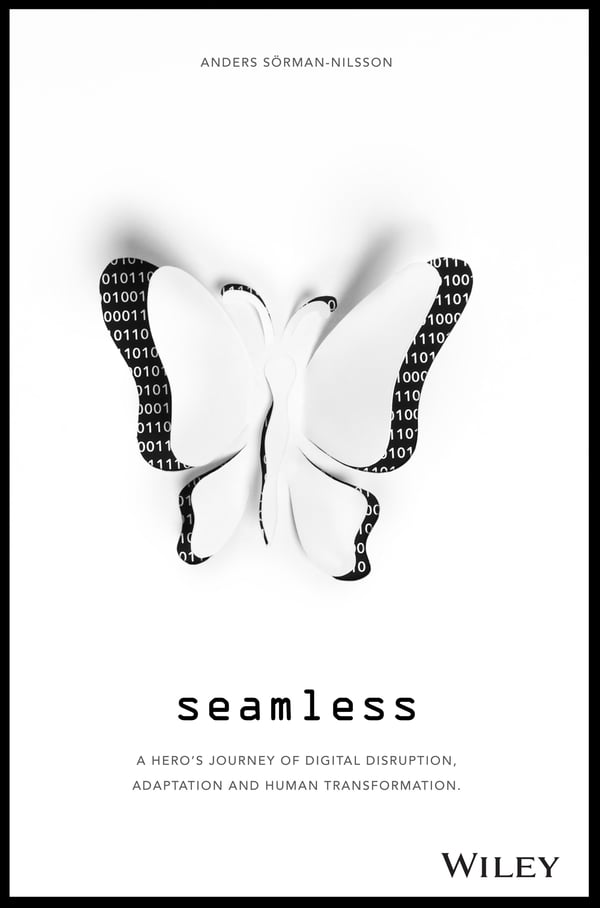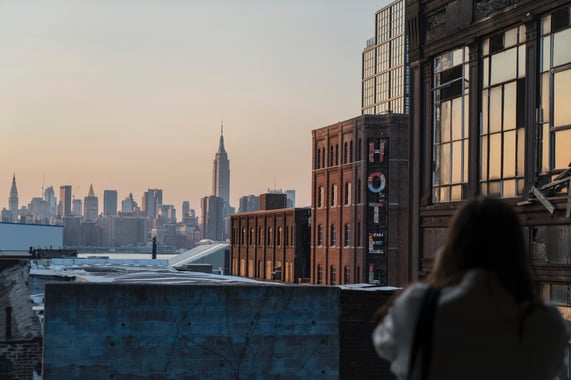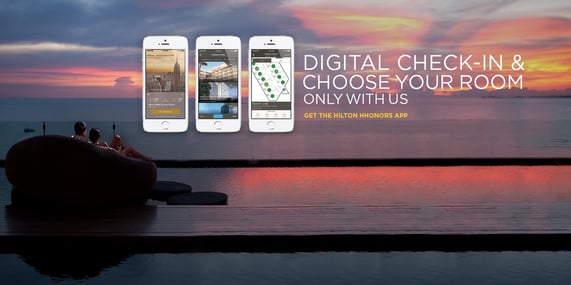Foresights and ideas that expand minds and inspire a change of heart.

Businesses — and especially digital businesses — have historically been good at solving human problems. Netflix makes it easy to stream your favourite movies and films, for example, while Instacart simplifies the process of shopping for groceries, Dropbox enables you to safely store, sync and share your files, and Podio makes collaboration and managing projects fun and easy. What makes these companies successful is their ability to not only identify and address real human problems, but also eliminate the friction points that slow the customer down, or impede the person from taking a certain action or completing a purchase.

This case study is featured in my upcoming book, Seamless: A Hero's Journey of Digital Disruption, Adaptation and Human Transformation, which is hot off the press.
"As business leaders seek digital answers, Anders reminds us what the question was. How can we keep customers coming back by delivering transformational results? He presents a compelling case for the importance of a great - seamless - customer journey and foresights into helping brand leaders navigate both the digital and analogue."
- Brendan Ives, Head of Division X, Telia Company
"Anders sees patterns that are hidden in plain sight to the rest of us. Anders uses history to help us see the future, which makes this book approachable even if you aren't a high tech nerd."
- David Rorsheim, General Manager, Uber ANZ
Friction doesn’t necessarily stop your customers from doing something, but it negatively affects the customer experience and significantly reduces your chances of turning first-time customers into loyal followers.
Consider the following statistics, which highlight the importance of removing friction points and delivering empathetic customer experiences:
Fifty-five per cent of consumers think that a frustrating experience on a website can negatively impact on their overall opinion of the brand (according to the Super Office blog ‘32 customer experience statistics you need to know for 2016’).
A more analogue example of when you can experience friction is when you are travelling. It’s a process that’s often filled with small and big friction points. One friction point that may seem small, but can still have a bad effect on the overall experience of travel, is when you arrive at your hotel and have to wait in line before you are given access to your room. Of course, the reason you perceive this to be such a big issue is because you’re likely to be tired after a long and exhausting day of journeying — but it’s the hotel that cops all your negativity.

A study from Cornell University’s Center for Hospitality Research suggests that the arrival process has a massive impact on overall guest satisfaction. The study, titled ‘Lost in translation: Cross-country differences in hotel guest satisfaction’, reports that when guests from the United States have to wait longer than five minutes, they reach a certain breaking point — and the effect of passing that point resulted in a 47 per cent decrease in guest satisfaction. The breaking point for guests from France, Germany, Italy and Spain occurred after waiting for fifteen minutes in line, while guests from the United Kingdom had a seventeen-minute tolerance and guests from Japan didn’t pass their breaking point until they’d waited for thirty minutes.
One of our clients, the global hospitality company Hilton, has with their updated app Hilton HHonors turned this problem and friction point into an opportunity to seamlessly delight their guests. Hilton’s app gives guests the opportunity to skip the line at the front desk and check in digitally via their smart phone. Additionally, the app enables hero guests to select both room type and exactly which room at the hotel they want to have. Other features include providing access to digital floor plans, the ability to purchase upgrades, make special requests and check-out. To sum this up, Hilton gives their guests more insight and control over their hotel stay. The benefit for Hilton is that this app enables them to gather valuable data about their guests, which gives them an opportunity to optimise processes like cleaning, re-stocking of the minibar and much more. Moreover, they can use this data to build guest preferences, offer a better experience and get ideas for new services and offerings.

So what Hilton has done is replace an analogue touch point, the face-to-face interaction at the front desk, with a digital interface, the HHonors app. Apparently, digital solutions can sometimes be more empathetic than human service and can eliminate friction points in the analogue world. What’s also worth keeping in mind in this context is that the customer doesn’t think in terms of channels — he or she just wants to solve their problems and have a frictionless, or seamless customer experience during their adventurous journey.
Ask yourself...
Think about the following with regard to your business:

Header Text
Lorem ipsum dolor sit amet, consectetur adipiscing elit, sed do eiusmod tempor incididunt ut labore et dolore magna aliqua. Ut enim ad minim veniam, quis nostrud exercitation ullamco laboris nisi ut aliquip ex ea commodo consequat. Duis aute irure dolor in reprehenderit in voluptate velit esse cillum dolore eu fugiat nulla pariatur.
Lorem ipsum dolor sit amet, consectetur adipiscing elit, sed do eiusmod tempor incididunt ut labore et dolore magna aliqua. Ut enim ad minim veniam, quis nostrud exercitation ullamco laboris nisi ut aliquip ex ea commodo consequat. Duis aute irure dolor in reprehenderit in voluptate velit esse cillum dolore eu fugiat nulla pariatur.
Lorem ipsum dolor sit amet, consectetur adipiscing elit, sed do eiusmod tempor incididunt ut labore et dolore magna aliqua. Ut enim ad minim veniam, quis nostrud exercitation ullamco laboris nisi ut aliquip ex ea commodo consequat. Duis aute irure dolor in reprehenderit in voluptate velit esse cillum dolore eu fugiat nulla pariatur.

Header Text
Lorem ipsum dolor sit amet, consectetur adipiscing elit, sed do eiusmod tempor incididunt ut labore et dolore magna aliqua. Ut enim ad minim veniam, quis nostrud exercitation ullamco laboris nisi ut aliquip ex ea commodo consequat. Duis aute irure dolor in reprehenderit in voluptate velit esse cillum dolore eu fugiat nulla pariatur.
Lorem ipsum dolor sit amet, consectetur adipiscing elit, sed do eiusmod tempor incididunt ut labore et dolore magna aliqua. Ut enim ad minim veniam, quis nostrud exercitation ullamco laboris nisi ut aliquip ex ea commodo consequat. Duis aute irure dolor in reprehenderit in voluptate velit esse cillum dolore eu fugiat nulla pariatur.
Lorem ipsum dolor sit amet, consectetur adipiscing elit, sed do eiusmod tempor incididunt ut labore et dolore magna aliqua. Ut enim ad minim veniam, quis nostrud exercitation ullamco laboris nisi ut aliquip ex ea commodo consequat. Duis aute irure dolor in reprehenderit in voluptate velit esse cillum dolore eu fugiat nulla pariatur.

Header Text
Lorem ipsum dolor sit amet, consectetur adipiscing elit, sed do eiusmod tempor incididunt ut labore et dolore magna aliqua. Ut enim ad minim veniam, quis nostrud exercitation ullamco laboris nisi ut aliquip ex ea commodo consequat. Duis aute irure dolor in reprehenderit in voluptate velit esse cillum dolore eu fugiat nulla pariatur.
Lorem ipsum dolor sit amet, consectetur adipiscing elit, sed do eiusmod tempor incididunt ut labore et dolore magna aliqua. Ut enim ad minim veniam, quis nostrud exercitation ullamco laboris nisi ut aliquip ex ea commodo consequat. Duis aute irure dolor in reprehenderit in voluptate velit esse cillum dolore eu fugiat nulla pariatur.
Lorem ipsum dolor sit amet, consectetur adipiscing elit, sed do eiusmod tempor incididunt ut labore et dolore magna aliqua. Ut enim ad minim veniam, quis nostrud exercitation ullamco laboris nisi ut aliquip ex ea commodo consequat. Duis aute irure dolor in reprehenderit in voluptate velit esse cillum dolore eu fugiat nulla pariatur.
& STAY UP TO DATE WITH FORESIGHTS AND TREND REPORTS!
WE WILL EQUIP YOU WITH THE VIDEOS AND MATERIALS YOU NEED TO SUCCESSFULLY PITCH ASN.
0 Comment